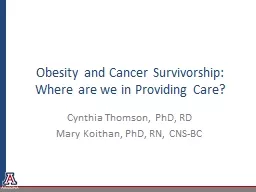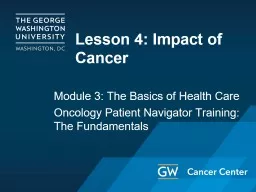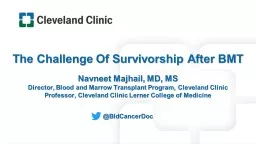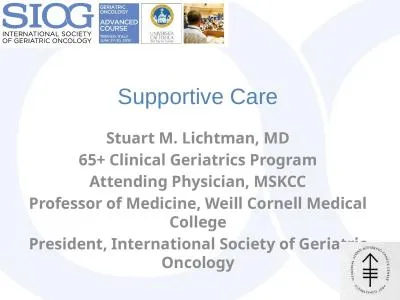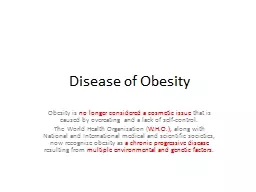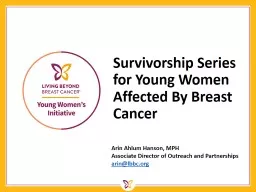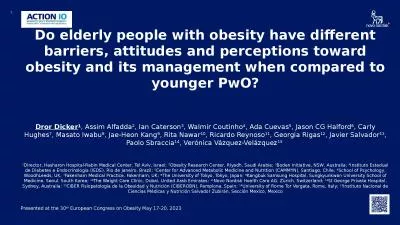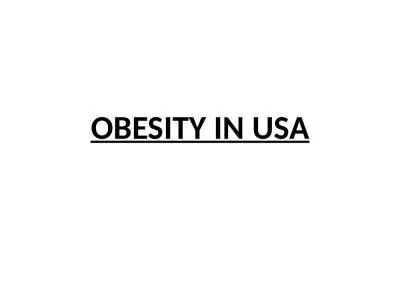PPT-Obesity and Cancer Survivorship: Where are we in Providing Care?
Author : liane-varnes | Published Date : 2019-11-09
Obesity and Cancer Survivorship Where are we in Providing Care Cynthia T homson PhD RD Mary Koithan PhD RN CNSBC Objectives This webinar will help you Describe
Presentation Embed Code
Download Presentation
Download Presentation The PPT/PDF document "Obesity and Cancer Survivorship: Where a..." is the property of its rightful owner. Permission is granted to download and print the materials on this website for personal, non-commercial use only, and to display it on your personal computer provided you do not modify the materials and that you retain all copyright notices contained in the materials. By downloading content from our website, you accept the terms of this agreement.
Obesity and Cancer Survivorship: Where are we in Providing Care?: Transcript
Download Rules Of Document
"Obesity and Cancer Survivorship: Where are we in Providing Care?"The content belongs to its owner. You may download and print it for personal use, without modification, and keep all copyright notices. By downloading, you agree to these terms.
Related Documents

